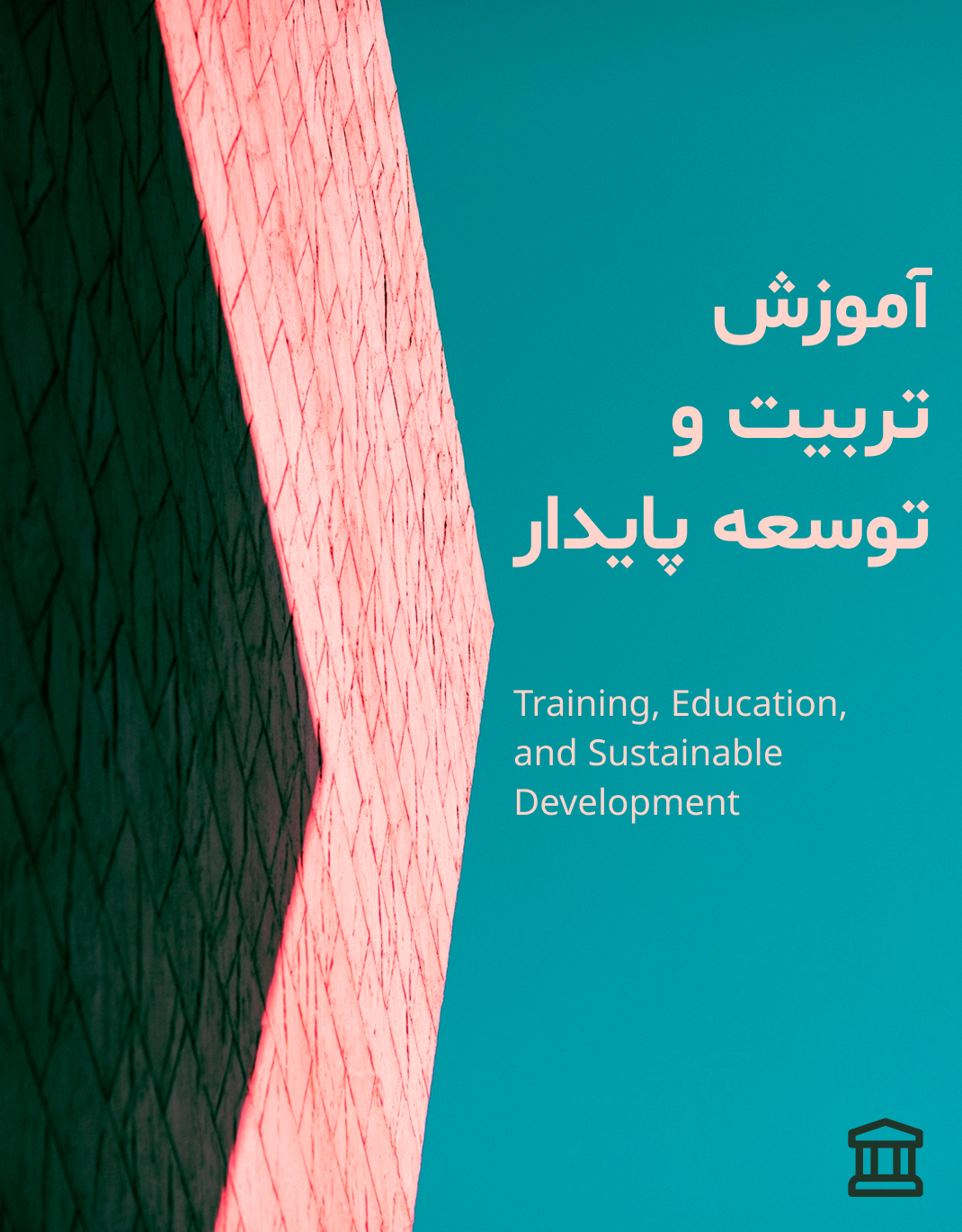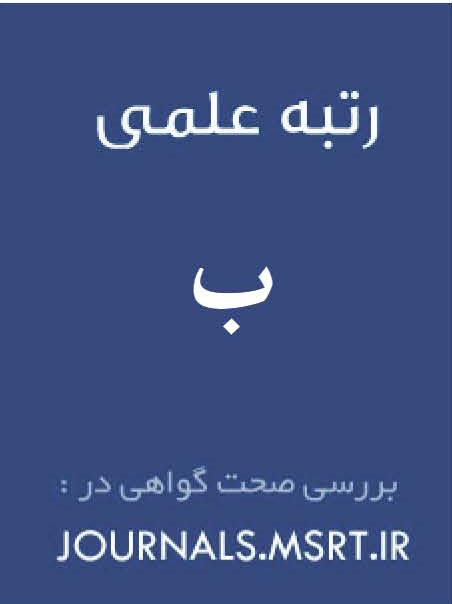انتخاب تأمینکنندگان سبز با مدل ترکیبی برنامهریزی چندهدفه و مجموعههای راف
کلمات کلیدی:
مدیریت زنجیره تأمین سبز, انتخاب تأمینکننده, برنامهریزی چندهدفه, مجموعههای راف, ایرانخودروچکیده
هدف این پژوهش طراحی و ارائه مدلی دقیق و علمی برای انتخاب تأمینکنندگان سبز با استفاده از ترکیب برنامهریزی ریاضی چندهدفه و تئوری مجموعههای راف در شرکت ایرانخودرو است. این پژوهش از نظر هدف، کاربردی–توسعهای و از نظر روش اجرا، توصیفی–تحلیلی و مدلسازی است. دادهها از طریق مطالعات میدانی و کتابخانهای، اسناد شرکت ایرانخودرو و سه پرسشنامه محققساخته گردآوری شد. جامعه آماری شامل مدیران و کارشناسان مرتبط با خرید و مسائل زیستمحیطی و همچنین ۱۸ تأمینکننده منتخب قطعات ایرانخودرو بود که بر اساس جدول مورگان، ۶۶ نفر از آنان در نمونه آماری شرکت کردند. روایی محتوایی پرسشنامهها با شاخص CVI=0.91 و پایایی با آلفای کرونباخ بالاتر از 0.83 تأیید شد. برای تحلیل دادهها از آزمون t، تحلیل عاملی تأییدی، مدل ترکیبی برنامهریزی چندهدفه و مجموعههای راف استفاده شد. وزن شاخصهای زیستمحیطی با مجموعههای راف و مدل چندهدفه با نرمافزار WinQSB به مدل خطی تکهدفه تبدیل گردید. نتایج تحلیل نشان داد که چهار معیار اصلی—قیمت، کیفیت، سطح خدمات و عملکرد زیستمحیطی—در انتخاب تأمینکنندگان نقش اساسی دارند. اوزان بهدستآمده بهترتیب برای معیارها برابر با 0.54، 0.12، 0.19 و 0.15 بود. در میان ۱۸ تأمینکننده مورد بررسی، ۱۲ تأمینکننده برتر بر اساس محدودیتهای ظرفیت و تقاضا انتخاب شدند. نتایج بهینه مدل نشان داد که حداقل هزینه تأمین برابر با 15.885 میلیارد ریال، حداکثر سطح خدمت برابر با ۲ روز بهبود، و حداقل درصد کالای معیوب 2.65٪ بوده است. همچنین میانگین امتیاز زیستمحیطی تأمینکنندگان برتر بیش از ۴ واحد برآورد شد که بیانگر همسویی با اصول توسعه پایدار است. پژوهش حاضر نشان داد که ترکیب برنامهریزی چندهدفه با مجموعههای راف میتواند ابزاری مؤثر و انعطافپذیر برای انتخاب تأمینکنندگان سبز در صنایع مختلف باشد. این مدل با در نظر گرفتن معیارهای کمی و کیفی و محدودیتهای واقعی، تصمیمگیری چندمعیاره را بهبود بخشیده و موجب ارتقای عملکرد زیستمحیطی زنجیره تأمین میشود. استفاده از این مدل در صنایع آلاینده نظیر خودروسازی، شیمیایی و پتروشیمی میتواند به تخصیص بهینه منابع، کاهش آلودگی، و بهبود پایداری کمک کند.
دانلودها
مراجع
Akman, G. (2015). Evaluating suppliers to include green supplier development programs via fuzzy c-means and VIKOR methods. Computers & Industrial Engineering, 86, 69-82. https://doi.org/10.1016/j.cie.2014.10.013
Alamroshan, F., La’li, M., & Yahyaei, M. (2022). The green-agile supplier selection problem for the medical devices: a hybrid fuzzy decision-making approach. Environmental Science and Pollution Research, 29(5), 6793-6811. https://doi.org/10.1007/s11356-021-14690-z
Ebrahimi, M. (2024). Optimizing the Green Supply Chain Considering Technology which Used in Production Under Uncertainty. Supply chain management, 25(81), 77-85.
Haghighat Monfared, J., & Karimi, F. (2024). Identifying and prioritizing factors affecting green supply chain management in the offshore industry with the analytical network process (ANP) approach. Business Management, 6(24), 21-48.
Hailiang, Z., Khokhar, M., Islam, T., & Sharma, A. (2023). A model for green-resilient supplier selection: fuzzy best–worst multi-criteria decision-making method and its applications. Environmental Science and Pollution Research, 30(18), 54035-54058. https://doi.org/10.1007/s11356-023-25749-4
Jihu, L. (2024). Green Supply Chain Management Optimization Based on Chemical Industrial Clusters.
Judijanto, L., Utami, E. Y., & Harsono, I. (2024). Green Supply Chain Finance: A Bibliometric Review of Financing Instruments, Challenges, and Opportunities. West Science Interdisciplinary Studies, 2(03), 647-655. https://doi.org/10.58812/wsis.v2i03.745
Kang, K., Gao, S., Gao, T., & Zhang, J. (2021). Pricing and Financing Strategies for a Green Supply Chain With a Risk-Averse Supplier. IEEE Access, 9, 9250-9261. https://doi.org/10.1109/ACCESS.2021.3050130
Kannan, G., Haq, A. N., Sasikumar, P., & Arunachalam, S. (2008). Analysis and selection of green suppliers using interpretative structural modelling and analytic hierarchy process. International Journal of Management and Decision Making, 9(2), 163-178. https://doi.org/10.1504/IJMDM.2008.017198
Lo, H.-W., Liou, J. J. H., Wang, H.-S., & Tsai, Y.-S. (2018). An integrated model for solving problems in green supplier selection and order allocation. Journal of Cleaner Production, 190, 339-352. https://doi.org/10.1016/j.jclepro.2018.04.105
Ningrum, E., Nugroho, A., Darmansyah, D., & Ahmar, N. (2024). A Scoping Review of Green Supply Chain and Company Performance. International Journal of Quantitative Research and Modeling, 5, 26-30. https://doi.org/10.46336/ijqrm.v5i1.608
Pizzetti, M., Gatti, L., & Seele, P. (2021). Firms talk, suppliers walk: Analyzing the locus of Greenwashing in the blame game and introducing 'Vicarious greenwashing'. Journal of Business Ethics, 170(1), 21-38. https://doi.org/10.1007/s10551-019-04406-2
Rachid, B., Roland, D., Sebastien, D., & Ivana, R. (2024). Risk Management Approach for Lean, Agile, Resilient and Green Supply Chain. World Academy of Science, Engineering and Technology, International Journal of Social, Behavioral, Educational, Economic, Business and Industrial Engineering, 11(4), 742-750. https://publications.waset.org/10006688/risk-management-approach-for-lean-agile-resilient-and-green-supply-chain
Rashid, A., Baloch, N., Rasheed, R., & Ngah, A. H. (2024). Big data analytics-artificial intelligence and sustainable performance through green supply chain practices in manufacturing firms of a developing country. Journal of Science and Technology Policy Management.
Rezvani, H. R., Nikmohammadi, A., & Mohammadi, S. (2021). Investigating the effect of green supply chain management on improving supplier performance with regard to the mediating role of social capital (case study: raw material suppliers of units located in Rasht Industrial Park). Modern Research Approaches in Management and Accounting(65), 65-84.
Samadzadeh, M., Givarian, H., Rabiee Mandjin, M. R., & Hashemzadeh Khorasani, G. (2022). identification and ranking of strategic policy -making components in information technology outsourcing (case study of islamic azad University). Public Policy In Administration, 13(45), 35-49. https://doi.org/10.30495/ijpa.2022.19956
Santos, C., Coelho, A., & Cancela, B. L. (2024). The impact of greenwashing on sustainability through green supply chain integration: the moderating role of information sharing. Environment, Development and Sustainability. https://doi.org/10.1007/s10668-024-05009-2
Tseng, M.-L., & Chiu, A. S. F. (2013). Evaluating firm's green supply chain management in linguistic preferences. Journal of Cleaner Production, 40, 22-31. https://doi.org/10.1016/j.jclepro.2010.08.007
Yang, Y., & Jiang, Y. (2023). Does suppliers slack influence the relationship between buyers environmental orientation and green innovation? Journal of Business Research, 157(1), 113569. https://doi.org/10.1016/j.jbusres.2022.113569
Yu, W., Chavez, R., Feng, M., & Wiengarten, F. (2024). Integrated green supply chain management and operational performance. Supply Chain Management: An International Journal, 19(5/6), 683-696.
Zarei, K., Mashaikhi Nezam Abadi, E., & Zarei. (2025). Identification of key factors and success model in implementing green supply chain management in Iran's construction industry. Dynamic Management and Business Analysis, 3(4), 1-22. https://www.noormags.ir/view/en/articlepage/2212328
Zhang, R. (2024). Methods for Carbon Reduction Through Green Supply Chain Management in the Automotive Industry. Frontiers in Business Economics and Management, 17(3), 301-303. https://doi.org/10.54097/s5vaf884
دانلود
چاپ شده
ارسال
بازنگری
پذیرش
شماره
نوع مقاله
مجوز
حق نشر 2025 حسین پوراسماعیل (نویسنده); كمال الدين رحماني; مجید باقرزاده خواجه (نویسنده)

این پروژه تحت مجوز بین المللی Creative Commons Attribution-NonCommercial 4.0 می باشد.

